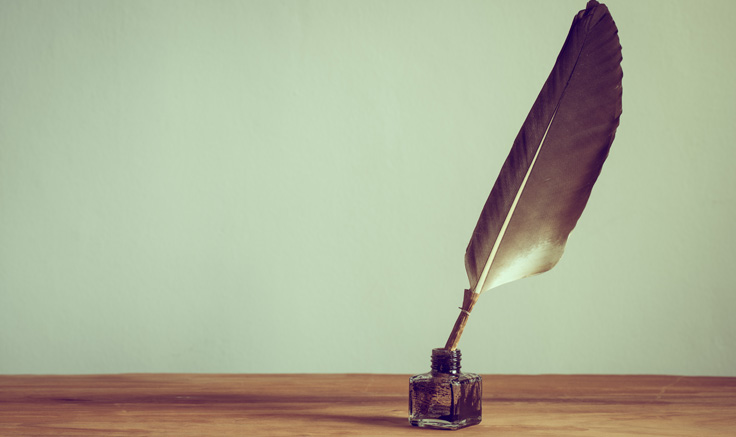
Purchase Tickets
Creating a Rough Draft: Museum Creative Processes
April 3, 2014

Anyone who knows me well, knows that I really struggle with writing. I freeze when I?m faced with a blank sheet of paper or an empty white box that appears on my computer screen. I have friends who are talented writers. I envy them the way words seem to fly from their fingertips, land on the page and become something amazing. A good friend who has had the occasion to edit my work told me that I struggle because I want to write perfect copy, not a rough draft.
Creativity and innovation often happen when you look at something and start to think about how you can transform it. It?s taking the rough draft and playing with it. It?s not always necessary to start with a blank page. As a matter of fact, a lot of time it?s better to just start getting the ideas out of your head and onto paper or into the world.
As I?ve traveled through Indiana working with local history organizations, I have seen a lot of very good ideas and interesting exhibits. Some of the best work that I?ve seen has come when folks use ideas to create a draft and begin to flesh it out. The ideas may have come from objects in their collections. They may have come from previous work done at other institutions. They may have been the result of discussion with the community or colleagues. Wherever the ideas came from, the draft was the basis for the finished project.
Think about what the rough drafts? of exhibits and programs would look like. Talk through your ideas with someone or, better yet, a group of people. Throw some ideas out there and see what happens. Allow the ideas to flow and twist and change.
Cut out pictures of objects, place them on paper and play with how the exhibit might look. Take some field trips. Look at what?s already out there. Talk to folks about how they developed their programs. Feel free to get goofy and propose things that seem kind of crazy. Gather the ideas and work with them. Use them to make a rough draft. Polish your draft and craft the best final copy you can. Then, allow yourself to be finished.
Two of the most important things that I?ve learned since I started working in museums are that you don?t have to start from a blank page and there is no such thing as perfect copy. Everything that we do is built on something else. There have been centuries of rough drafts?. The cabinets of curiosity?, the earliest historical societies, the first genealogy clubs are the foundations for our institutions today. Museum best practices have developed from lots of trial and error. And, what we do today in our museums will be the rough drafts for future institutions.
_________________________________








